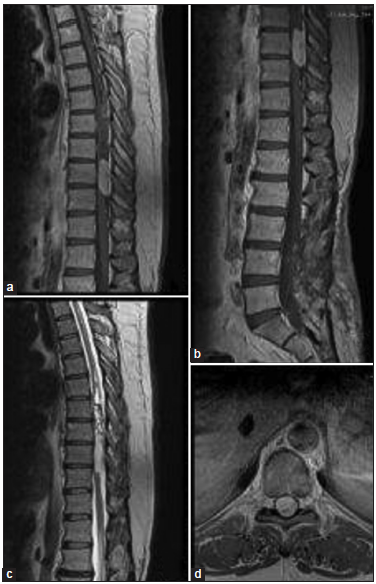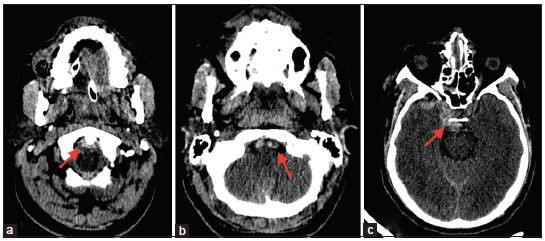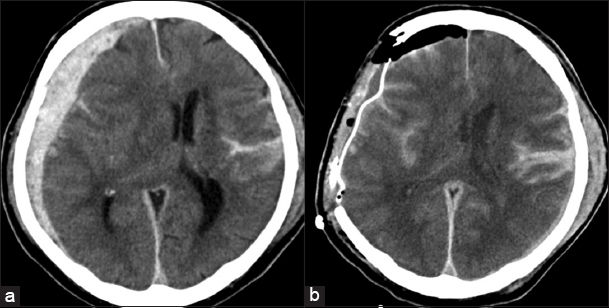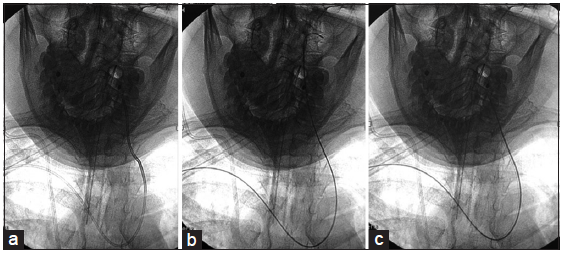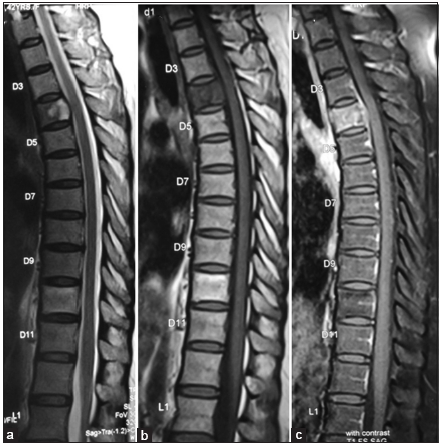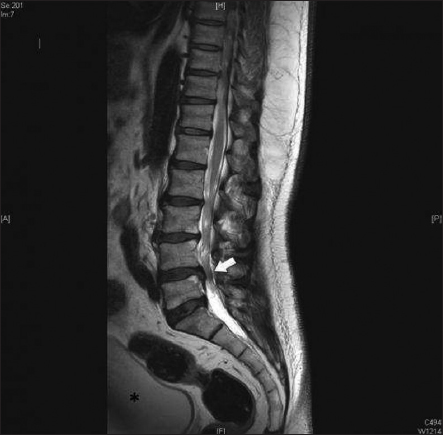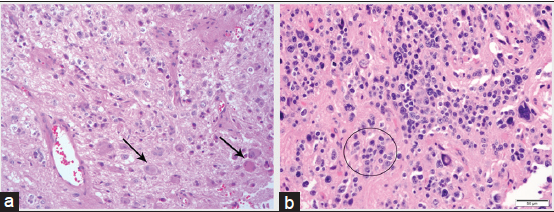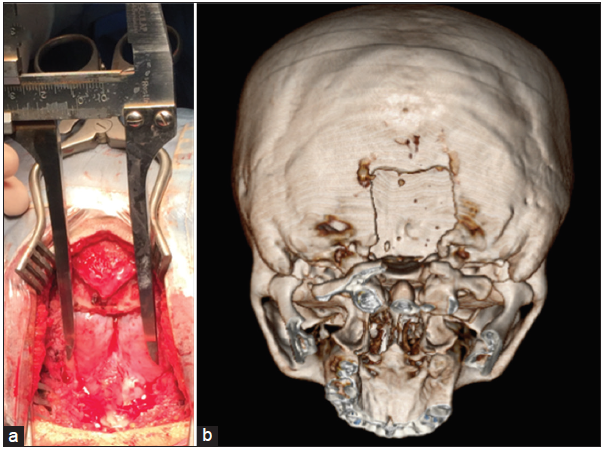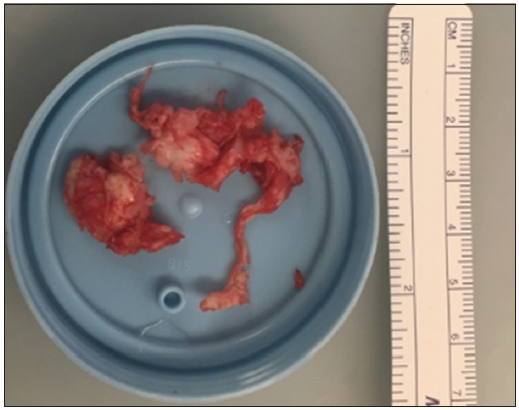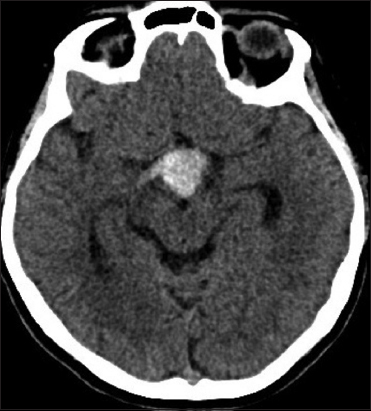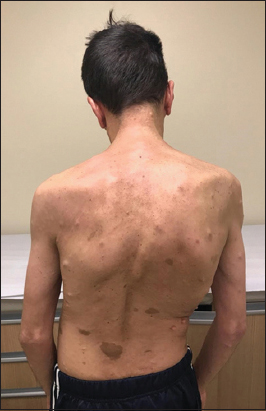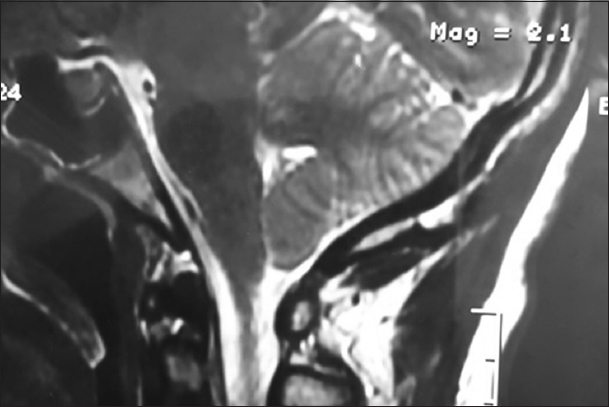Characteristics and Outcomes of Pediatric Patients Supported With Ventricular Assist Device—A Multi-Institutional Analysis
Objectives: The use of ventricular assist devices for pediatric patients with heart failure is increasing, but is associated with significant morbidity and mortality. Our objectives were to describe the admission outcomes and resource utilization of pediatric patients supported with ventricular assist devices, utilizing a multicenter database. Data Sources: Pediatric Health Information System database (comprising 49 nonprofit children's hospitals). Study Selection: Retrospective cohort analysis of the database from January 2006 to September 2015 for all admissions less than or equal to 21 years old with ventricular assist device implantation. Data Extraction: The primary outcome was hospital mortality. The secondary outcomes were hospital length of stay and adjusted cost. Data Synthesis: We analyzed 744 ventricular assist device implantations (740 patients), 422 (57%) males, and 363 (49%) non-Hispanic white. Median age at admission was 5.9 years (interquartile range, 0.9–13.5 yr), and median length of stay was 69 days (interquartile range, 36–122 d). The overall hospital mortality was 188 (25%), whereas 395 (53%) were transplanted and 141 (19%) were discharged on ventricular assist device. Extracorporeal membrane oxygenation was used, in addition to ventricular assist device, in 340 (46%). The majority of ventricular assist device implantations (453, 61%) were from 2011 to 2015 (compared to 2006–2010). More patients discharged on ventricular assist device from 2011 to 2015 (23% vs 13% in 2006–2010; p = 0.001). There was no difference in median age, mortality, length of stay, or adjusted costs between these time periods. On multivariable analysis, underlying congenital heart disease, renal failure, liver congestion, sepsis, cerebrovascular accident, and extracorporeal membrane oxygenation were associated with hospital mortality. Sepsis and ventricular assist device replacement/repair were associated with higher adjusted cost and longer length of stay. Conclusions: The pediatric ventricular assist device experience continues to grow, with a significant increase in the number of patients undergoing ventricular assist device implantation and a higher proportion being discharged from hospital on ventricular assist device support in recent years. Underlying congenital heart disease, renal failure, sepsis, cerebrovascular accident, and extracorporeal membrane oxygenation are significantly associated with hospital mortality. Dr. Puri carried out the initial analyses, drafted the initial article, and reviewed and revised the article. Dr. Anders conceptualized and designed the study, coordinated data collection, and reviewed and revised the article. Drs. Causey and Moffett coordinated and completed the data collection, and reviewed and revised the article. Dr. Wang supervised the analysis and critically reviewed the article. Drs. Tume, Cabrera, Heinle, and Shekerdemian supervised analysis, and critically reviewed and revised the article. All authors approved the final article as submitted and agree to be accountable for all aspects of the work. Supplemental digital content is available for this article. Direct URL citations appear in the printed text and are provided in the HTML and PDF versions of this article on the journal's website (http://journals.lww.com/pccmjournal). Dr. Cabrera's institution received funding from Novartis, and he disclosed off-label product use of continuous flow device use in children. The remaining authors have disclosed that they do not have any potential conflicts of interest. For information regarding this article, E-mail: kriti.puri@bcm.edu ©2019The Society of Critical Care Medicine and the World Federation of Pediatric Intensive and Critical Care Societies
|
Age-Specific Distribution of Diagnosis and Outcomes of Children Admitted to ICUs: A Population-Based Cohort Study
Objectives: Although several studies have reported outcome data on critically ill children, detailed reports by age are not available. We aimed to evaluate the age-specific estimates of trends in causes of diagnosis, procedures, and outcomes of pediatric admissions to ICUs in a national representative sample. Design: A population-based retrospective cohort study. Setting: Three hundred forty-four hospitals in South Korea. Patients: All pediatric admissions to ICUs in Korea from August 1, 2009, to September 30, 2014, were covered by the Korean National Health Insurance Corporation, with virtually complete coverage of the pediatric population in Korea. Patients less than 18 years with at least one ICUs admission between August 1, 2009, and September 30, 2014. We excluded neonatal admissions (< 28 days), neonatal ICUs, and admissions for health status other than a disease or injury. The final sample size was 38,684 admissions from 32,443 pediatric patients. Intervention: None. Measurements and Main Results: The overall age-standardized admission rate for pediatric patients was 75.9 admissions per 100,000 person-years. The most common primary diagnosis of admissions was congenital malformation (10,897 admissions, 28.2%), with marked differences by age at admission (5,712 admissions [54.8%] in infants, 3,994 admissions [24.6%] in children, and 1,191 admissions [9.9%] in adolescents). Injury was the most common primary diagnosis in adolescents (3,248 admissions, 27.1%). The overall in-hospital mortality was 2,234 (5.8%) with relatively minor variations across age. Neoplasms and circulatory and neurologic diseases had both high frequency of admissions and high in-hospital mortality. Conclusions: Admission patterns, diagnosis, management, and outcomes of pediatric patients admitted to ICUs varied by age groups. Strategies to improve critical care qualities of pediatric patients need to be based on the differences of age and may need to be targeted at specific age groups. Supplemental digital content is available for this article. Direct URL citations appear in the printed text and are provided in the HTML and PDF versions of this article on the journal's website (http://journals.lww.com/pccmjournal). The authors have disclosed that they do not have any potential conflicts of interest. For information regarding this article, E-mail: joongbum.cho@gmail.com ©2019The Society of Critical Care Medicine and the World Federation of Pediatric Intensive and Critical Care Societies
|
Nutritional Status Deterioration Occurs Frequently During Children's ICU Stay
Objectives: Malnutrition and faltering growth at PICU admission have been related to suboptimal outcomes. However, little is known about nutritional status deterioration during PICU stay, as critical illness is characterized by a profound and complex metabolism shift, which affects energy requirements and protein turnover. We aim to describe faltering growth occurrence during PICU stay. Design: Single-center prospective observational study. Setting: Twenty-three-bed general PICU, Lyon, France. Patients: All critically ill children 0–18 years old with length of stay longer than 5 days were included (September 2013–December 2015). Interventions: Weight and height/length were measured at admission, and weight was monitored during PICU stay, in order to calculate body mass index for age z score. Faltering growth was defined as body mass index z score decline over PICU stay. Children admitted during the first year of the study and who presented with faltering growth were followed after PICU discharge for 3 months. Measurements and Main Results: We analyzed 579 admissions. Of them, 10.2% presented a body mass index z score decline greater than 1 SD and 27.8% greater than 0.5. Admission severity risk scores and prolonged PICU stay accounted for 4% of the variability in nutritional status deterioration. Follow-up of post-PICU discharge nutritional status showed recovery within 3 months in most patients. Conclusions: Nutritional deterioration is frequent and often intense in critically ill children with length of stay greater than 5 days. Future research should focus on how targeted nutritional therapies can minimize PICU faltering growth and improve post-PICU rehabilitation. Drs. Valla, Ginhoux, Cour-Andlauer, and Javouhey designed the study, collected, and participated to interpretation of data. Drs. Ford-Chessel, Gervet, and Ms. Giraud helped to design the study and to collect data. Drs. Baudin and Gaillard Le Roux helped designing and analyzing the data. Dr. Tume participated to interpretation of data and provided English editing of the article. All authors were involved in writing the article and had final approval of the submitted and published versions. Supplemental digital content is available for this article. Direct URL citations appear in the printed text and are provided in the HTML and PDF versions of this article on the journal's website (http://journals.lww.com/pccmjournal). This study was conducted with the financial support of ACTICLAN 2011 grant (sponsored by Fresenius Kabi, on behalf of the French speaking nutrition scientific society [SFNEP]) and Association Lyonnaise de logistique post hospitalière grant. In addition, this study was conducted with the support of the "Centre d'Investigation Clinique pédiatrique" des Hospices Civils de Lyon, with the precious help of Behaa Krefa. Dr. Valla reports personal fees from Baxter, personal fees and nonfinancial support from Nutricia. Dr. Valla's institution received funding from Fresenius Kabi and Association Lyonnaise de logistique post hospitalière, and he received funding from Baxter and Nutricia. The remaining authors have disclosed that they do not have any potential conflicts of interest. This work was performed in Hôpital Femme Mère Enfant, Hospices Civils de Lyon, Lyon, France. For information regarding this article, E-mail: Frederic.valla@chu-lyon.fr ©2019The Society of Critical Care Medicine and the World Federation of Pediatric Intensive and Critical Care Societies
|
Tracheal Size and Morphology on the Reconstructed CT Imaging
Objectives: To characterize the real size and morphology of tracheas in childhood for the optimal selection of endotracheal tube. Design: A retrospective cohort study of pediatric patients who received CT scan of the cervical spine from July 2011 to March 2018. Cross-sectional CT images vertical to trachea were reconstructed and the accurate tracheal diameters were measured. The validity of the traditional age-based formula for predicting the endotracheal tube size was assessed for the best fit to trachea. Setting: Tertiary Emergency and Critical Care Center of Kyushu University Hospital. Patients: Children, who are 1 month to 15 years old, received CT scan of the cervical spine. Interventions: None. Measurements and Main Results: We enrolled 86 children with median age of 53 months. The cross-sectional shape of pediatric trachea was circular at the cricoid level and elliptical at the infraglottic level. The narrowest part of pediatric trachea was the transverse diameter at the infraglottic level at any age. Significant positive correlation between age and the narrowest diameter was observed. When compared the transverse diameter at the infraglottic level with the outer diameter of endotracheal tubes, uncuffed endotracheal tubes selection based on the traditional age-based formula ran a significant risk of oversized endotracheal intubation until 10 years old compared with cuffed endotracheal tubes selection (60.0% vs 23.8%; p < 0.05). Conclusions: These findings indicate the safety and efficacy of cuffed endotracheal tubes in infants and children and the reconsideration for the airway management in pediatric anesthesia and intensive care. Supplemental digital content is available for this article. Direct URL citations appear in the printed text and are provided in the HTML and PDF versions of this article on the journal's website (http://journals.lww.com/pccmjournal). Drs. Maki and Baba disclosed work for hire. The remaining authors disclosed that they do not have any potential conflicts of interest. For information regarding this article, E-mail: ystmmtmr@pediatr.med.kyushu-u.ac.jp ©2019The Society of Critical Care Medicine and the World Federation of Pediatric Intensive and Critical Care Societies
|
Spontaneous Breathing Trial for Prediction of Extubation Success in Pediatric Patients Following Congenital Heart Surgery: A Randomized, Controlled Trial
Objectives: To evaluate the usefulness of a spontaneous breathing trial for predicting extubation success in pediatric patients in the postoperative period after cardiac surgery compared with a physician-led weaning. Study Design: Randomized, controlled trial. Setting: PICU of a tertiary-care university hospital. Patients: A population of pediatric patients following cardiac surgery for congenital heart disease. Interventions: Patients on mechanical ventilation for more than 12 hours after surgery who were considered ready for weaning were randomized to the spontaneous breathing trial group or the control group. The spontaneous breathing trial was performed on continuous positive airway pressure with the pressure support of 10 cmH2O, the positive end-expiratory pressure of 5 cmH2O, and the fraction of inspired oxygen less than or equal to 0.5 for 2 hours. Patients in the control group underwent ventilator weaning according to clinical judgment. Measurements and Main Results: The primary endpoint was extubation success defined as no need for reintubation within 48 hours after extubation. Secondary outcomes were PICU length of stay, hospital length of stay, occurrence rate of ventilator-associated pneumonia, and mortality. One hundred ten patients with the median age of 8 months were included in the study: 56 were assigned to the spontaneous breathing trial group and 54 were assigned to the control group. Demographic and clinical data and Risk Adjustment for Congenital Heart Surgery-1 classification were similar in both groups. Patients undergoing the spontaneous breathing trial had greater extubation success (83% vs 68%, p = 0.02) and shorter PICU length of stay (median 85 vs 367 hr, p < 0.0001) compared with the control group, respectively. There was no significant difference between groups in hospital length of stay, occurrence rate of ventilator-associated pneumonia, and mortality. Conclusions: Pediatric patients with congenital heart disease undergoing the spontaneous breathing trial postoperatively had greater extubation success and shorter PICU length of stay compared with those weaned according to clinical judgment. Supplemental digital content is available for this article. Direct URL citations appear in the printed text and are provided in the HTML and PDF versions of this article on the journal's website (http://journals.lww.com/pccmjournal). The authors have disclosed that they do not have any potential conflicts of interest. For information regarding this article, E-mail: apcarlotti@fmrp.usp.br ©2019The Society of Critical Care Medicine and the World Federation of Pediatric Intensive and Critical Care Societies
|
Temporal Variability in the Sampling of Vital Sign Data Limits the Accuracy of Patient State Estimation
Objectives: Physiologic signals are typically measured continuously in the critical care unit, but only recorded at intermittent time intervals in the patient health record. Low frequency data collection may not accurately reflect the variability and complexity of these signals or the patient's clinical state. We aimed to characterize how increasing the temporal window size of observation from seconds to hours modifies the measured variability and complexity of basic vital signs. Design: Retrospective analysis of signal data acquired between April 1, 2013, and September 30, 2015. Setting: Critical care unit at The Hospital for Sick Children, Toronto. Patients: Seven hundred forty-seven patients less than or equal to 18 years old (63,814,869 data values), within seven diagnostic/surgical groups. Interventions: None. Measurements and Main Results: Measures of variability (SD and the absolute differences) and signal complexity (multiscale sample entropy and detrended fluctuation analysis [expressed as the scaling component α]) were calculated for systolic blood pressure, heart rate, and oxygen saturation. The variability of all vital signs increases as the window size increases from seconds to hours at the patient and diagnostic/surgical group level. Significant differences in the magnitude of variability for all time scales within and between groups was demonstrated (p < 0.0001). Variability correlated negatively with patient age for heart rate and oxygen saturation, but positively with systolic blood pressure. Changes in variability and complexity of heart rate and systolic blood pressure from time of admission to discharge were found. Conclusions: In critically ill children, the temporal variability of physiologic signals supports higher frequency data capture, and this variability should be accounted for in models of patient state estimation. Drs. Eytan and Jegatheeswaran are co-first authors. Supported by the David and Stacey Cynamon Chair in Pediatric Critical Care, The Hospital for Sick Children, Toronto, ON, Canada. Dr. Laussen disclosed that he was the lead developer of the T3 software, which is owned by Boston Children's Hospital, from whom he has received a royalty, and an unpaid medical consultant of Etiometry LLC, Boston, MA. The remaining authors have disclosed that they do not have any potential conflicts of interest. This work was performed at The Hospital for Sick Children, Toronto, ON, Canada. For information regarding this article, E-mail: peter.laussen@sickkids.ca ©2019The Society of Critical Care Medicine and the World Federation of Pediatric Intensive and Critical Care Societies
|
A Retrospective Case-Control Study to Identify Predictors of Unplanned Admission to Pediatric Intensive Care Within 24 Hours of Hospitalization
Objectives: To identify the clinical findings available at the time of hospitalization from the emergency department that are associated with deterioration within 24 hours. Design: A retrospective case-control study. Setting: A pediatric hospital in Ottawa, ON, Canada. Patients: Children less than 18 years old who were hospitalized via the emergency department between January 1, 2008, and December 31, 2012. Cases (n = 98) had an unplanned admission to the PICU or unexpected death on the hospital ward within 24 hours of hospitalization and controls (n = 196) did not. Interventions: None. Main Results: Ninety-eight children (53% boys; mean age 63.2 mo) required early unplanned admission to the PICU. Multivariable conditional logistic regression resulted in a model with five predictors reaching statistical significance: higher triage acuity score (odds ratio, 4.1; 95% CI, 1.7–10.2), tachypnea in the emergency department (odds ratio, 4.6; 95% CI, 1.8–11.8), tachycardia in the emergency department (odds ratio, 2.6; 95% CI, 1.1–6.5), PICU consultation in the emergency department (odds ratio, 8.0; 95% CI, 1.1–57.7), and admission to a ward not typical for age and/or diagnosis (odds ratio, 4.5; 95% CI, 1.7–11.6). Conclusions: We have identified risk factors that should be included as potential predictor variables in future large, prospective studies to derive and validate a weighted scoring system to identify hospitalized children at high risk of early clinical deterioration. Supported, in part, by an operating grant from the Children's Hospital of Eastern Ontario Research Institute. Dr. Krmpotic disclosed that this study was funded by an operating grant from the Children's Hospital of Eastern Ontario Research Institute. Dr. Toppozini received funding from acting as a Children's Hospital of Eastern Ontario Research Institute research assistant (aided in design of data collection tool, data collection and verification, interpretation, and writing/revising article). Dr. Plint's institution received funding from Children's Hospital of Eastern Ontario Research Institute, and she disclosed that she is supported in part by a University of Ottawa Tier II Clinical Research Chair award. The remaining authors have disclosed that they do not have any potential conflicts of interest. Current affiliation for Dr. Krmpotic: Pediatric Critical Care, IWK Health Centre, 5850/5980 University Ave, Halifax, NS, B3K6R8, Canada. For information regarding this article, E-mail: kristina.krmpotic@iwk.nshealth.ca ©2019The Society of Critical Care Medicine and the World Federation of Pediatric Intensive and Critical Care Societies
|
The Effect of Asphyxia Arrest Duration on a Pediatric End-Tidal CO2-Guided Chest Compression Delivery Model
Objectives: To determine the effect of the duration of asphyxial arrest on the survival benefit previously seen with end-tidal CO2-guided chest compression delivery. Design: Preclinical randomized controlled study. Setting: University animal research laboratory. Subjects: Two-week-old swine. Interventions: After either 17 or 23 minutes of asphyxial arrest, animals were randomized to standard cardiopulmonary resuscitation or end-tidal CO2-guided chest compression delivery. Standard cardiopulmonary resuscitation was optimized by marker, monitor, and verbal feedback about compression rate, depth, and release. End-tidal CO2-guided delivery used adjustments to chest compression rate and depth to maximize end-tidal CO2 level without other feedback. Cardiopulmonary resuscitation for both groups proceeded from 10 minutes of basic life support to 10 minutes of advanced life support or return of spontaneous circulation. Measurements and Main Results: After 17 minutes of asphyxial arrest, mean end-tidal CO2 during 10 minutes of cardiopulmonary resuscitation was 18 ± 9 torr in the standard group and 33 ± 15 torr in the end-tidal CO2 group (p = 0.004). The rate of return of spontaneous circulation was three of 14 (21%) in the standard group rate and nine of 14 (64%) in the end-tidal CO2 group (p = 0.05). After a 23-minute asphyxial arrest, neither end-tidal CO2 values (20 vs 26) nor return of spontaneous circulation rate (3/14 vs 1/14) differed between the standard and end-tidal CO2-guided groups. Conclusions: Our previously observed survival benefit of end-tidal CO2-guided chest compression delivery after 20 minutes of asphyxial arrest was confirmed after 17 minutes of asphyxial arrest. The poor survival after 23 minutes of asphyxia shows that the benefit of end-tidal CO2-guided chest compression delivery is limited by severe asphyxia duration. The content is solely the responsibility of the authors and does not necessarily represent the official views of the National Institutes of Health. Supplemental digital content is available for this article. Direct URL citations appear in the printed text and are provided in the HTML and PDF versions of this article on the journal's website (http://journals.lww.com/pccmjournal). Research reported in this publication was supported by the Eunice Kennedy Shriver National Institute of Child Health and Human Development award R21HD072845, by the National Institute of Neurological Disorders and Stroke awards K08NS080984, R01NS060703, R01NS107417, and R21NS095036, by the National Research Service Award for Clinician Scientists in Pediatric Critical Cardiopulmonary Disease T32HL125239, and by the National Center for Research Resources of the National Institutes of Health Roadmap for Medical Research grant UL1RR025005. Dr. O'Brien's institution received funding from National Institutes of Health (NIH) T32 Institutional Grant (T32HL125239), and she disclosed work for hire. Dr. Lee's institution received funding from the NIH and the American Heart Association, and she received funding from Medtronic (consulting on near-infrared spectroscopy technology in 2016). Dr. Koehler's institution received funding from the NIH. Dr. Hunt received funding from the NIH (grant support as a coinvestigator), Zoll Medical Corporation (consulting on simulation-based medicine education innovation she created called "Rapid Cycle Deliberate Practice" and from medical education technologies that she and her research partners have created that Zoll has a nonexclusive license for two of the devices, although she has not received any royalties), and National Medical Consultants (for performing expert medical reviews). Dr. Shaffner's institution received funding from the National Institute of Child Health and Human Development and the National Institute of Neurological Disorders and Stroke; he received funding from Wolters Kluwer. The remaining authors have disclosed that they do not have any potential conflicts of interest. This work was performed in the research facilities of the Department of Anesthesiology/Critical Care Medicine, Johns Hopkins University, Baltimore, MD. For information regarding this article, E-mail: dshaffn1@jhmi.edu ©2019The Society of Critical Care Medicine and the World Federation of Pediatric Intensive and Critical Care Societies
|
Etiologies and Clinical Outcomes of Patients With Secondary Hemophagocytic Lymphohistiocytosis at a Tertiary PICU
Objectives: To assess the etiologies and outcomes of patients with secondary hemophagocytic lymphohistiocytosis in the PICU. Design: Prospective observational cohort study. Setting: A single PICU at a pediatric tertiary hospital in Hanoi, Vietnam. Patients: Pediatric patients meeting the criteria for secondary hemophagocytic lymphohistiocytosis. Interventions: None. Measurements and Main Results: Between June 2017 and May 2018, 25 consecutive patients with a mean (SD) age of 23.3 months (21.6 mo) were included. Collected variables included etiologies of hemophagocytic lymphohistiocytosis and clinical and laboratory findings at admission. The Pediatric Index of Mortality 2 score at admission was calculated. Outcomes were death and multiple organ dysfunction. The severity of multiple organ dysfunction was assessed by the Pediatric Logistic Organ Dysfunction 2 score. The mean (SD) Pediatric Index of Mortality 2 predicted mortality rate was 5.6% (7.6%). Cytomegalovirus and Epstein-Barr virus coinfections (60%) were the most common suspected etiology of hemophagocytic lymphohistiocytosis. Other etiologies included Epstein-Barr virus sole infections (20%), cytomegalovirus sole infections (16%), and one unknown cause (4%). Multiple organ dysfunction (excluding hematologic failure) was found in 22 patients (88%) with death occurring in 14 patients (56%). The mean (SD) Pediatric Logistic Organ Dysfunction 2 predicted mortality rate among patients with multiple organ dysfunction was 11.9% (11.2%). Despite having lower Pediatric Index of Mortality 2 predicted mortality rates at admission, Epstein-Barr virus-cytomegalovirus coinfection cases with multiple organ dysfunction had slightly greater Pediatric Logistic Organ Dysfunction 2 predicted mortality rates than Epstein-Barr virus sole infection cases with multiple organ dysfunction: 12.2% (10.5%) versus 11.3% (11.0%). However, these rates were lower than cytomegalovirus sole infection cases with multiple organ dysfunction (14.4% [16.3%]). Area under the curve values for Pediatric Index of Mortality 2 and Pediatric Logistic Organ Dysfunction 2 were 0.74 (95% CI, 0.52–0.95) and 0.78 (95% CI, 0.52–1.00), respectively, suggesting that both scales were fair to good at predicting mortality. Conclusions: Viral infections, particularly Epstein-Barr virus-cytomegalovirus coinfections, were a common cause of secondary hemophagocytic lymphohistiocytosis. The implication of these coinfections on the clinical course of hemophagocytic lymphohistiocytosis needs to be delineated. Supplemental digital content is available for this article. Direct URL citations appear in the printed text and are provided in the HTML and PDF versions of this article on the journal's website (http://journals.lww.com/pccmjournal). Ms. Dao received funding and support for article research from Mayo Clinic College of Medicine and Science (Mayo Foundation for Medical Education and Research) (Research Travel Funding). Dr. Galeano received funding from Mayo Clinic Alix School of Medicine (travel grant for research). The remaining authors have disclosed that they do not have any potential conflicts of interest. For information regarding this article, E-mail: ouellette.yves@mayo.edu ©2019The Society of Critical Care Medicine and the World Federation of Pediatric Intensive and Critical Care Societies
|
Antibiotic Prophylaxis for Open Chest Management After Pediatric Cardiac Surgery
Objectives: Although open chest management optimizes hemodynamics after cardiac surgery, it increases postoperative infections and leads to increased mortality. Despite the importance of antibiotic prophylaxis during open chest management, no specific recommendations exist. We aimed to compare the occurrence rates of bloodstream infection and surgical site infection between the different prophylactic antibiotic regimens for open chest management after pediatric cardiac surgery. Design: Retrospective, single-center, observational study. Setting: PICU at a tertiary children's hospital. Patients: Consecutive patients less than or equal to 18 years old with open chest management after cardiac surgery followed by delayed sternal closure, between January 2012 and June 2018. Interventions: None. Measurements and Main Results: We compared the composite occurrence rate of postoperative bloodstream infection and surgical site infection within 30 days after cardiac surgery between three prophylactic antibiotic regimens: 1) cefazolin, 2) cefazolin + vancomycin, and 3) vancomycin + meropenem. In 63 pediatric cardiac surgeries with open chest management, 17 bloodstream infections, and 12 surgical site infections were identified postoperatively. The composite occurrence rates of bloodstream infection and surgical site infection were 10 of 15 (67%), 10 of 19 (53%), and nine of 29 (31%) in the cefazolin, cefazolin + vancomycin, and vancomycin + meropenem regimens, respectively (p = 0.07). After adjusting for age, open chest management duration, extracorporeal membrane oxygenation use, and nasal methicillin-resistant Staphylococcus aureus colonization in multivariable analysis, there was no significant difference between the cefazolin and the cefazolin + vancomycin regimens (p = 0.19), while the vancomycin + meropenem regimen had a lower occurrence rate of bloodstream infection and surgical site infection than the cefazolin regimen (odds ratio, 0.0885; 95% CI, 0.0176–0.446; p = 0.003). Conclusions: In this study, a lower occurrence rate of postoperative bloodstream infection and surgical site infection was observed among patients with broad-spectrum antibiotic regimen after pediatric cardiac surgery with open chest management. Further studies, ideally randomized controlled studies investigating the efficacy of broad-spectrum antibiotics and their complications, are warranted before routine implementation of broad-spectrum prophylactic antibiotic regimen. The authors have disclosed that they do not have any potential conflicts of interest. For information regarding this article, E-mail: hatachi@wch.opho.jp ©2019The Society of Critical Care Medicine and the World Federation of Pediatric Intensive and Critical Care Societies
|
